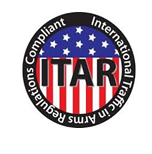Plating Processes Contact Us
Industrial Hard Chrome is a hard (RC 68-72) electrolytically deposited coating which can be applied to most metallic substrates ranging from all steels and cast iron to most non-ferrous metals including aluminum. Deposit thickness can vary depending on application from .0001 in. to over .050 in. Hard chrome is typically used to reduce friction and wear, impart some corrosion resistance, or is applied to repair a worn or damaged component.
Precision Thin Dense Chrome is a hard, thin dense coating applied by the process of electrochemical deposition. Deposit thickness can range from a few millionths of an inch to .002 inch depending on application. The deposit is quite uniform and has excellent sliding friction and wear characteristics. when used in thicknesses below .0001 it outperforms conventional hard chrome in friction reduction and lubricity in metal to metal contact. It is also used on molds to improve release of rubber and plastic parts.
Electroless Nickel is an autocatalyitic process which deposits a uniform coating of phosphorous nickel on a variety of substrates. The coating, as plated, has a hardness of RC 48-52. The coating can be heat treated to achieve a hardness of RC 70. The deposit may have a low, mid or high phosphorous content depending on the application. Thickness of the deposit is typically .003 in or less. Electroless nickel also serves as an alternative to a electrolytic process and, in most cases, will plate internal or hard to reach areas without the aid of expensive tooling.
Cadmium is a soft metal that can be electrodeposited on ferrous substrates primarily for corrosion resistance. It is frequently chromated and used as a base for paint to give maximum protection to aircraft and ordinance parts. Deposits are generally less than .001 inch thick, but will vary with each application.
Low Hydrogen Embrittlement Cadmium (LHE) is deposited from an unbrightened cadmium bath which will allow hydrogen to escape from parts during the hydrogen embrittlement relief bake. This coating is specified by McDonnell Douglas. Deposits are generally less than .001 inch thick but will vary with each application.
Vacuum Cadmium (Vac Cad) is a coating applied to parts by vaporization of cadmium pellets in a vacuum chamber. It is soft and has excellent corrosion resistance. When chromated it is an excellent base for paint. Deposit thickness is from .0001 in. to .0005 in. depending on application. Vac-Cad is generally used for critical aircraft, missile or ordinance hardware that are designed to operate very near their ultimate strength limits. Vac-Cad is ideal for these types of parts because hydrogen is not induced into the metal meaning hydrogen embrittlement cannot occur. The result is no reduced tensile strength. Typical applications include landing gear components, pins, yokes, hooks, springs, fragile components in ordinance and fuel systems.




